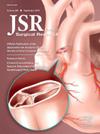Microsoft Excel宏在回顾性图表回顾研究中的准确性比较分析
IF 1.8
3区 医学
Q2 SURGERY
引用次数: 0
摘要
虽然回顾性图表审查是临床研究的一种有用的方法,但从电子健康记录中提取数据仍然存在挑战。当手工收集时,非结构化的“自由文本”数据特别乏味,而且容易出现错误和偏差。我们旨在评估Microsoft Excel宏的准确性,以促进数据抽象过程。方法对100例甲状腺癌术后病理报告进行回顾性分析。20个感兴趣的变量(肿瘤特征、侵袭性特征和淋巴结计数)由医师审评人员手工提取。开发了一个宏(“ThyMAC”)来提取相同的变量。使用配对t检验测量人工和宏观辅助方法之间的抽象错误率和速度。然后分析了ThyMAC的准确率、分类率和互译信度。在确定可纠正的错误之后,对优化后的宏进行特别分析。结果审稿人的抽检错误率略低于ThyMAC (3.8% vs 5.3%, P = 0.03)。相比之下,通过宏观辅助,数据收集时间要快270倍(65秒比0.24秒每份病理报告,P <;0.001)。总体而言,ThyMAC对所有抽象变量的准确率都很高(87-100%),对20个变量中的14个具有中等到完美的一致性。与内科医生文摘者相比,解决可纠正的错误显著降低了宏观错误率(3.6%对0.5%,P <;0.001)。结论:与训练有素的医师提取器相比,宏在回顾性图表回顾研究中提取非结构化数据的准确性高,速度优于手动方法。宏错误通常是可以预防的,并且可以修改程序以提高数据提取的准确性。宏可以作为一种高效和通用的工具来帮助研究人员进行图表审查数据收集,特别是当涉及大型数据集时。本文章由计算机程序翻译,如有差异,请以英文原文为准。
Comparative Analysis of the Accuracy of Microsoft Excel Macros in Retrospective Chart Review Studies
Introduction
While retrospective chart review is a useful methodology for clinical research, challenges still exist when abstracting data from the electronic health record. When collected manually, unstructured “free text” data are particularly tedious and can be susceptible to errors and biases. We aimed to evaluate the accuracy of Microsoft Excel macros to facilitate the data abstraction process.
Methods
One hundred pathology reports following surgery for thyroid cancer were retrospectively evaluated. Twenty variables of interest (tumor characteristics, invasive features, and lymph node counts) were manually abstracted by a physician reviewer. A macro (“ThyMAC”) was developed to extract the same variables. Abstraction error rates and speed were measured between manual and macro-assisted methods using a paired t-test. Accuracy, classification rates, and interrater reliability of ThyMAC were then analyzed. After identifying correctable errors, an ad hoc analysis of the optimized macro was then performed.
Results
Abstraction errors by physician reviewer were slightly lower relative to ThyMAC (3.8 versus 5.3% error rate, P = 0.03). By contrast, data collection time was 270 times faster via macro-assistance (65 versus 0.24 s per pathology report, P < 0.001). Overall, ThyMAC performed with high rates of accuracy (87-100%) for all abstracted variables, with moderate-to-perfect agreement for 14 of 20 variables. Addressing correctable errors significantly decreased macro error rates compared to the physician abstractor (3.6 versus 0.5%, P < 0.001).
Conclusions
Compared to a trained physician abstractor, macros can extract unstructured data in retrospective chart review studies with high accuracy at speeds superior to a manual approach. Macro errors are typically preventable, and the program can be modified to improve data extraction accuracy. Macros can serve as an efficient and versatile tool to assist researchers with chart review data collection, especially when large datasets are involved.
求助全文
通过发布文献求助,成功后即可免费获取论文全文。
去求助
来源期刊
CiteScore
3.90
自引率
4.50%
发文量
627
审稿时长
138 days
期刊介绍:
The Journal of Surgical Research: Clinical and Laboratory Investigation publishes original articles concerned with clinical and laboratory investigations relevant to surgical practice and teaching. The journal emphasizes reports of clinical investigations or fundamental research bearing directly on surgical management that will be of general interest to a broad range of surgeons and surgical researchers. The articles presented need not have been the products of surgeons or of surgical laboratories.
The Journal of Surgical Research also features review articles and special articles relating to educational, research, or social issues of interest to the academic surgical community.

 求助内容:
求助内容: 应助结果提醒方式:
应助结果提醒方式:


